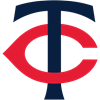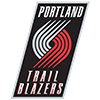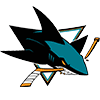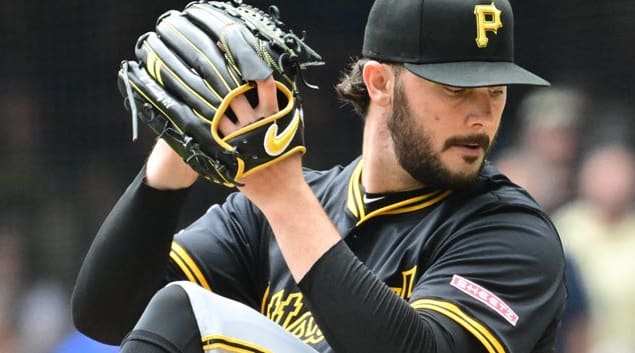Over my last few columns, I've taken a look at whether you should go for a 2018 title or play for next year, and the kinds of players you should be targeting in your deals. One thing that doesn't get discussed much, however, is how to actually make deals. Sure, there's the generic "buy low, sell high" kind of advice which rarely applies in real life, but I'm not talking about the overall strategy of which players to move and acquire. I'm talking about the nuts and bolts of how to make a trade – specifically, how to approach your league and communicate your intentions, and how to eke out extra value in the offers your get.
Funnily enough, some of the best lessons I've learned on that front haven't come from my years of playing fantasy baseball. They've come from my years of playing board games.
If you've played any of those newfangled "European" board games like Settlers of Catan or Ticket To Ride, you may have stumbled across the name Reiner Knizia. One of (maybe the) most prolific board-game designer of the last 30 years, Knizia's background is in mathematics and economics – he quit his banking job to become a full-time designer in the late 1990s – and it shows in his games, which tend to heavily focus on a specific element of economic theory while still being a lot of fun.
One of his most enduring creations, originally released in 1992 and having gone through
Over my last few columns, I've taken a look at whether you should go for a 2018 title or play for next year, and the kinds of players you should be targeting in your deals. One thing that doesn't get discussed much, however, is how to actually make deals. Sure, there's the generic "buy low, sell high" kind of advice which rarely applies in real life, but I'm not talking about the overall strategy of which players to move and acquire. I'm talking about the nuts and bolts of how to make a trade – specifically, how to approach your league and communicate your intentions, and how to eke out extra value in the offers your get.
Funnily enough, some of the best lessons I've learned on that front haven't come from my years of playing fantasy baseball. They've come from my years of playing board games.
If you've played any of those newfangled "European" board games like Settlers of Catan or Ticket To Ride, you may have stumbled across the name Reiner Knizia. One of (maybe the) most prolific board-game designer of the last 30 years, Knizia's background is in mathematics and economics – he quit his banking job to become a full-time designer in the late 1990s – and it shows in his games, which tend to heavily focus on a specific element of economic theory while still being a lot of fun.
One of his most enduring creations, originally released in 1992 and having gone through numerous printings and publishers since, is a card-based game called Modern Art. Each player runs a gallery and competes in auctions to acquire paintings by one of five modern artists. The more of a specific artist's work gets bought in a round, the hotter they are and the more valuable each piece becomes (and the more future pieces from that artist can be worth in subsequent rounds as well).
The core of the game is those auctions. There are four different types: Open, Sealed Bid, Fixed Price and Once Around, and understanding the dynamics of each of those auction types can help you improve the return you get on your own fantasy assets. Let's take a look:
Open
This is the classic auction style that most fantasy GMs would just call an "auction", as that's what gets used in auction leagues to begin the season. A player gets named, and everyone in the room (virtual or physical) starts shouting out numbers until eventually one high bidder is left.
While in general this auction style isn't too useful in trade talks, there are times when you can instigate the kind of competitive bidding this style of auction breeds, and push the price tag on the player(s) you're looking to deal to their highest point. For instance, if your league has any kind of in-person get-together for the All-Star Game, announcing some time around the fifth inning to a room full of slightly inebriated leaguemates that you're looking to move Mike Trout could get people jumping in with huge trade packages that they otherwise wouldn't have considered offering, and might regret in the morning.
One important thing to keep in mind in trade talks, but especially in an open auction, is the concept of the Winner's Curse. It's a description of a phenomenon that occurs in auctions, where the winner of the auction tends to pay more than the asset's "true" value. If everyone in the room has roughly equal information about the asset in question, the winner is going to be the person who was most optimistic about its eventual value – the furthest outlier, in other words. Think about all the super-hyped youngsters you've seen get bid through the roof in an auction only to fall short of earning back that inflated salary -- that's the Winner's Curse in action, and it applies just as easily to a trade as a bid. If you set up a situation where other GMs are competing directly against their championship competitors for a superstar, the emotional push of "I can't let them get Trout!" becomes just as strong as "I have to have Trout!" and allows you to cash in with a much bigger haul.
This can even work for teams in the title hunt, too. Just flip the scenario on its head and dangle a top prospect instead of a stud. "Hey, folks looking to rebuild, I'm willing to deal Eloy Jimenez for players that can put me over the top."
Sealed Bid
A sealed bid auction in Modern Art is simple. You put a painting up for auction, everyone figures out how much they're willing to bid on it and hides that amount of money in their hand. The bids are then revealed simultaneously, and high bid wins.
In fantasy trade terms, this is analogous to a scenario where you set a hard deadline on offers for a specific player. "I'm trading Corey Kluber, and I'll take the best offer I get by Sunday night." While in general I find that you're better off actually negotiating with other GMs rather than simply asking for take-it-or-leave-it offers, there are times when this approach can pay off. Setting a deadline like this can force other GMs to essentially bid against themselves to make their "best" offer up front, and result in a package that you might not otherwise have seen – or at least, not seen without days and days of back-and-forth by email or phone.
A sealed bid/hard deadline is really only going to work if the players you're putting up are in high demand, though. Nobody's going to go out of their way to figure out their "best" offer on Jake Arrieta. In the case of lesser assets, you may want to look to the next auction style for guidance instead.
(Incidentally, I've also been in a fantasy league – hockey, not baseball – that used this style of auction to stock rosters at the beginning of the year. We couldn't meet in person for a regular auction, so instead we sent in email lists of bids that would fill our entire rosters and use our entire budgets, and the lists were compared. High bids on any player won, and tied high bids kept the player available for the next round. We then sent in another list using our remaining budgets to fill our remaining slots; rinse and repeat until all rosters were filled. While some of the salaries ended up being, well, interesting, as some studs snuck through in early rounds when only one person bid on them and there were few dollar-days purchases because of the "use your whole budget" rule, it was a fun twist on the usual.)
Fixed Price
In a fixed price auction in Modern Art, you name your price and the first person to meet it wins, and you can do exactly the same thing in fantasy leagues. It's simple and hassle free, and is a great way to deal away a mid-range player who has value, but who doesn't fit your current roster needs.
For example, a few weeks ago in RotoWire's Staff Keeper League 3, I had something of a space crunch on my bench and wanted to activate Dustin Fowler from my minor leagues. I had a $1 Keibert Ruiz taking up a spot, but I already have a couple of possible keeper options at catcher, and Ruiz certainly isn't going to help me compete for a spot in the money in 2018. Rather than simply drop him, I posted a note on the league message board indicating I'd trade him for non-roster assets, either a draft pick or FAAB dollars or both, first come, first served. Someone got back to me ponying up $30 in FAAB, and we made the swap.
While I left the exact return open-ended in that situation, you can certainly be more specific in your demands, such as "I'll deal my first-round pick in next year's reserve draft for a middle-infield upgrade", or "I'll trade Arrieta for a top-50 prospect". The key here is to ask for something that isn't so extravagant it turns off prospective buyers, but at the same time is towards the upper end of the range of what a reasonable offer might have been if you'd tried negotiating in the usual manner. You're not necessarily trying to maximize your return, but instead simply ensure that you get a good one while cutting right to the chase.
Once Around
In Modern Art, a once-around auction starts on your left. The person next to you makes a bid (or passes), then the person to their left has the option to top that bid or pass. This continues around the table until it gets back to you, at which point you have the choice of accepting the standing high bid or topping it yourself. Bid pressure here comes from opportunity cost – each player only get one shot, so if they really want the painting they best not throw it away, to paraphrase Lin-Manuel Miranda.
While understanding the dynamics of this auction style doesn't have a lot of fantasy implications, the closest equivalent would come towards the end of a long negotiation, where you have multiple viable packages on the table and can't immediately decide between them. Going back one last time to each owner in turn and saying "Hey, I have another deal on the table that's slightly better than your last offer. If you want to improve on it, let me know quick" could shake loose an extra prospect or draft-pick upgrade.
This is a very tricky negotiating tactic to pull off, though, and it's not one you'll want to use too often. You could very easily rankle some of the other GMs with this and get a lot of "Nope, if there's another deal you like better, go ahead and take it" kind of responses, especially if you're too vague on who their competition is and what the other offer contains. If you've been talking to them for weeks about a deal, and they've known all along that there were other bidders, going back one final time can be seen as a goodwill gesture. They've invested all this time in trying to hammer something out with you, and you don't want to see them come away empty-handed. (Of course, if they understand what a sunk cost is, it may not work, but so much of negotiation is finding ways to get the other party to think emotionally instead of rationally).
Too many fantasy GMs think trading involves little more than sending out an email saying "Hey, what do you want for Nolan Arenado?", or updating their trade block on the league site and waiting for someone to make an offer. Adding more negotiating tactics and styles to your toolbox, and knowing when to break them out, can only help you add talent to your roster, regardless of whether you're going for it now or rebuilding for the future.
































